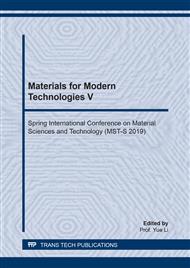p.180
p.194
p.200
p.207
p.214
p.221
p.231
p.238
p.244
Comparative Study of Calculation Methods for Shield Thickness of Typical Materials against Gamma Rays
Abstract:
The paper aims to analyze the shielding properties of concrete and lead materials against gamma rays at different energies, and the relationships between the shield thickness of the two materials and gamma ray energy and attenuation factor have been obtained by using the method of attenuation multiple and the method of half-value-thickness, respectively. The results show that when the gamma ray energy and the attenuation factor are determined, the thickness of the concrete shield layer obtained by the method of attenuation multiple is greater than that obtained by the half-value-thickness method. The relative magnitude of thickness of lead shield obtained by the method of attenuation multiple and the method of half-value-thickness method is relate to the gamma ray energy. When the gamma ray energy is lower than 8 MeV, the thickness of lead shield calculated by the method of attenuation multiple is larger than that obtained by the half-value-thickness method, while when the gamma ray energy is higher than 8 MeV, the conclusion is opposite.
Info:
Periodical:
Pages:
214-218
Citation:
Online since:
June 2019
Authors:
Keywords:
Price:
Сopyright:
© 2019 Trans Tech Publications Ltd. All Rights Reserved
Share:
Citation:


